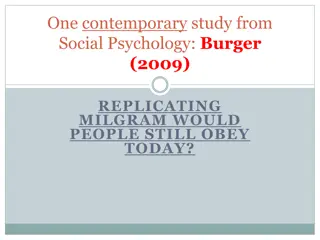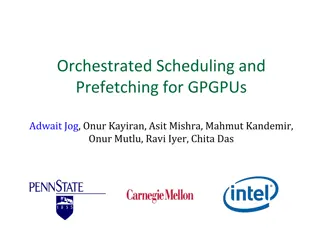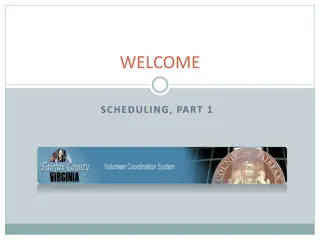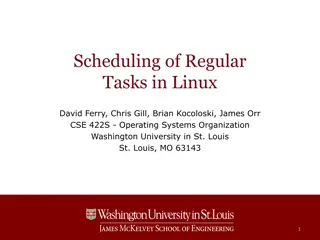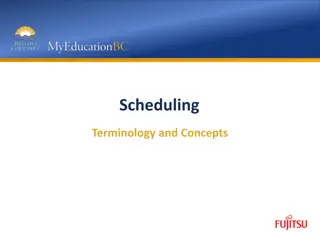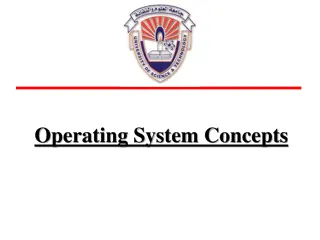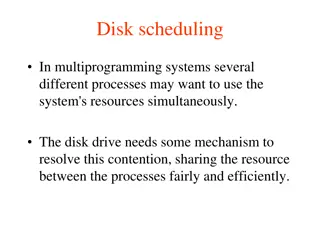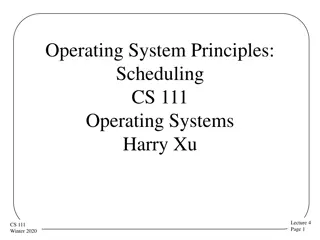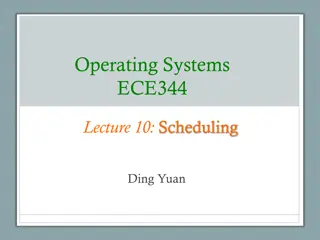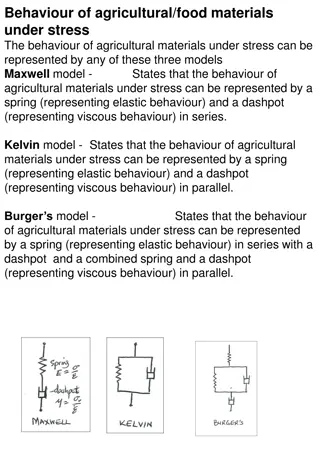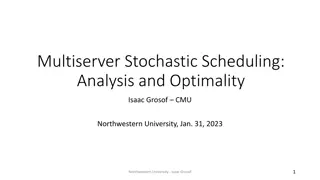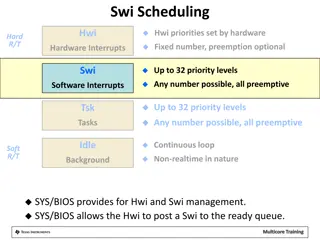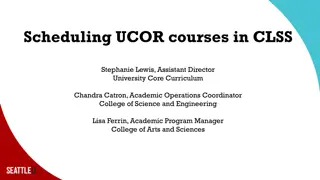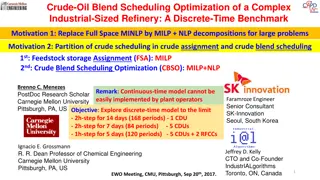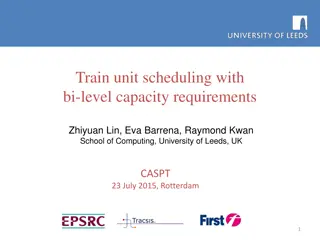Optimizing Restaurant Operations: Production Scheduling at Mel's Burger Bar
Mel's Burger Bar aims to efficiently manage customer flows, minimize wait times, and maximize profits through effective production scheduling. The restaurant segments tables based on capacity, distributes party sizes probabilistically, and models length of stay for each group. By implementing algorithms like Round Robin, they can optimize seating arrangements to enhance customer experience and operational efficiency.
Download Presentation

Please find below an Image/Link to download the presentation.
The content on the website is provided AS IS for your information and personal use only. It may not be sold, licensed, or shared on other websites without obtaining consent from the author. Download presentation by click this link. If you encounter any issues during the download, it is possible that the publisher has removed the file from their server.
E N D
Presentation Transcript
Production Scheduling: Mels Burger Bar Mitchell Bustillo, Jibben Hillen, Morgan Maccherone, and Elaine MacDonald
Goal: Maximize the number of people that move through the restaurant Minimize wait times Maximize profit
Problem setup 2-top, 4-top, and 6-tops, 12-top Sections seat approximately same number of customers Each table is a machine with a given capacity All tables/servers have the same processing times Each party is a job with characteristics based on size
Problem setup continued Queue is dumped upon restaurant close Model dinner for 5 hours Preemption not allowed If not in use, tables/machines can be combined for greater capacities (later modification)
Party sizes are distributed according to this PDF Party Size Probability 1 0 (they all sat at the bar) 2 0.24 3 0.22 4 0.29 5 0.10 6 0.12 7 0.01 8+ 0.02
Length of stay according to party size (normally distributed) Party Size Mean Length of Stay (hrs) Variance in Length of Stay (hrs) 1 N/A N/A 2 1.1 0.15 3 1.2 0.20 4 1.25 0.23 5 1.4 0.24 6 1.6 0.28 7 1.65 0.30 8+ 2.0 0.35
Arrivals Poisson with rate = .083 hours = 5 minutes Obviously, as the time of day changes, so will Ideas for future research: create a function (t) that models the change in arrival rate over time Wait Time in Queue Probability of Staying Lq 0.25 0.9 0.25 < Lq 0.50 0.8 0.50 < Lq 0.75 0.5 0.25 < Lq 1.00 0.3 1.00 < Lq 0.1
What we did Coded simulator in Python and tested different algorithms to see how they perform
Algorithm 1: Round Robin (currently used in Mels) For all sections: Get feasible tables and place party at any available table (lowest table number). If current section is full, go to next (if at section 3, go to 0). Performance measures based on Monte Carlo Simulation with 1000 trials: Parties dropped: 34.69 People dropped: 198.343 Parties seated: 145.149 People seated: 475.911
Algorithm 2: Random Assignment Iterate through all available tables in a random order until you find one you can seat the party at Performance measures based on Monte Carlo Simulation with 1000 trials: Parties dropped: 34.08 People dropped: 195.443 Parties seated: 145.692 People seated: 479.086
Algorithm 3: Restrict parties to certain table sizes Only 5 or 6 people could sit at a six top & only 3 or 4 people at four top Performance measures based on Monte Carlo Simulation with 1000 trials: Parties dropped: 33.594 People dropped: 193.371 Parties seated: 146.779 People seated: 483.589
Algorithm 4: Seat them at the smallest table available Take set of tables that could fit current party Sort these tables according to size Seat at first available table (lowest table number) Performance measures: Parties dropped: 33.155 People dropped: 191.286 Parties seated: 146.726 People seated: 483.374
Algorithm 5: Only seat parties of 4 or fewer Not the best for reputation, but let s give it a try! Performance measures Parties dropped: 34.1 People dropped: 204.681 Parties seated: 146.087 People seated: 471.188
Algorithm 6: Seat parties in sections where fewest number of people have been seated Good for balancing the server load Performance measures Parties dropped: 34.5 People dropped: 197.697 Parties seated: 145.602 People seated: 477.631
Algorithm 7: Do different things depending on state if there are a lot of free tables, seating people fast is optimal > maybe round robin or random if the queue is long (demand is > supply) or if tables are all occupied, try combining tables which might be optimal Performance measures Parties dropped: 26.13 People dropped: 117.23 Parties seated: 152.29 People seated: 554.28



